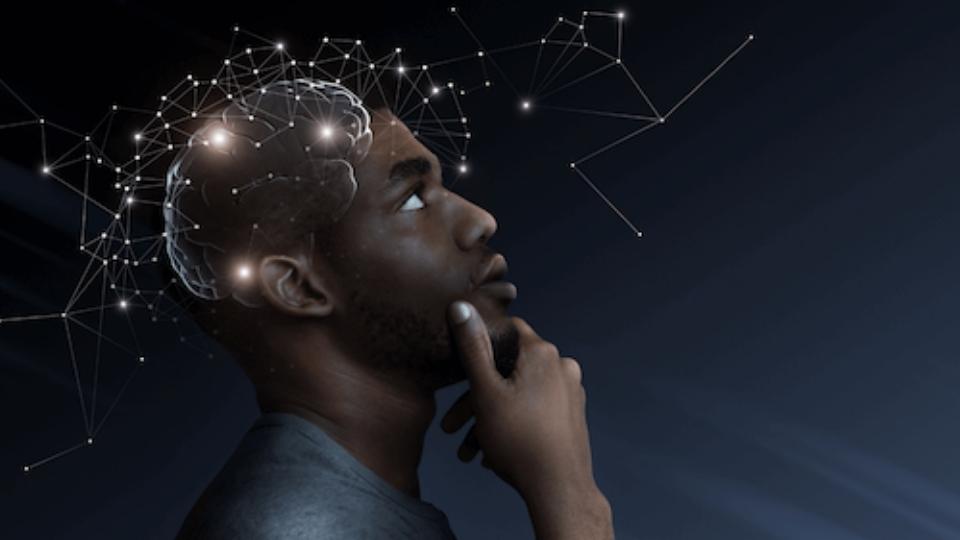Visualization has ancient origins, and we’re starting to understand the science of why successful people throughout history have used it to bring their visions to life. From monks to emperors, visualization has been a key to achievement for at least thousands of years. How this works and how to do it might not be obvious, so we’re going to explore the process. We’ll talk about what the term “visualization” means, look at some real-world examples, and learn how your beautiful, amazing brain does it. Finally, we’ll go over practical steps so that you can start using visualization to move toward your goals today.
What is Visualization?
Visualization means creating images or scenes in your “mind’s eye”. Visualizations can be still or moving, and they can have a little detail or a lot. You can visualize locations that you know well, or places you’ve never been. Visualizations can be completely realistic, or absolutely fictional.
Visualizing isn’t just about seeing, though. Vision is humanity’s dominant sense and around 50% of the cortex is devoted to it [1], so it’s a sensible way to approach visualization. But all of your senses should be involved when you visualize: sight, sound, taste, touch, and smell. Really vivid visualizations include all of your senses plus your very real emotions.
Let’s say you want to visualize sitting down with a fresh cup of coffee in your favorite chair. If you’re a coffee drinker, you can imagine the coffee’s aroma drifting to your nose, the unique, delicious flavor and heat. Imagine the sound of yourself drinking it as the warmth of the liquid is moving down your throat. Imagine the feel of the chair beneath you, and the satisfied, comforting emotion of the whole experience.

That’s a very realistic type of visualization. It’s not simple – there’s a lot going on – but it’s familiar, so you can use memory to create it. With practice, though, you can visualize experiences you’ve never had. More to the point, you can visualize the life you truly want, and then…start creating it in this world.
A Familiar Process
You probably use visualization all the time without realizing it. One way this happens is when you have incomplete sensory data about something in your environment and you fill in the blanks [2]. Let’s say you’re talking to a close friend on the phone, and based on their voice, you imagine their facial expressions. Or, imagine you leave a pot of pasta boling on the stove and go to another room, then you hear it boiling over because you left the lid on it. You can “see” what’s happening even though you only hear the noise. Our brains are very good at filling in gaps based on experience. This helps us respond to our environment quickly. Unfortunately, spontaneously visualizing isn’t always so helpful.
Let’s say you imagine a conversation you’re going to have with your boss tomorrow at your performance review, or how things are going to go when you give that presentation next week. You do this kind of thing all the time, but most people don’t do it in a way that supports success. You could be fueling a sense of dread and even freaking out a little because you’re imagining everything that could go wrong. That’s normal and common, so don’t beat yourself up. With awareness and some practice, you can stop using this disempowering way of imagining and visualizing.

A controlled imagination is important because, to some extent, what your brain does when you imagine is not different from what it does when you interact with the world. Sensations, emotions, and even remembering events that you’ve repeatedly created in your mind (i.e., a memory of something that hasn’t happened yet), uses the same kinds of patterns, pathways, and neurochemicals as real experiences. The implication here is that you can visualize yourself into a disempowered state the same way you can do the opposite. So understanding this process is very important. You want to make visualization work for you, not against you.
Do Highly Successful People Use Visualization?

Yes. Absolutely. We’d need volumes and volumes of books to write down the known examples of high performers who use visualization. Here are just a few:
- Muhammad Ali – “If my mind can conceive it and my heart can believe it, then I can achieve it.”
- Oprah Winfrey – “Anything you can imagine, you can create.”
- Lindsey Vonn – “I always visualize the run before I do it. By the time I get to the start gate, I’ve run that race 100 times already in my head…”
- Nicola Tesla – “When I get an idea, I start at once building it up in my imagination. I change the construction, make improvements, and operate the device in my mind.”
- Michael Phelps – His coach, Bob Bowman said “For months before a race Michael… mentally rehearses for two hours a day in the pool. He sees himself winning. He smells the air, tastes the water, hears the sounds, sees the clock.” Then, he practiced what he had imagined. Bowman went on to say that “Michael worked harder than I’ve seen anybody work in any endeavor.”
- Marc Arginteanu (Neurosurgeon) – “The surgery takes place in my mind, playing like a movie on the inside of my eyelids… By the time I gown and glove, the surgery has been flawlessly completed in my head.”
… And the list goes on.
Let’s be clear about one thing: Visualizing yourself throwing the winning touchdown in the Super Bowl without ever practicing and doing all the things required for that level of performance is not going to work. Just look back at the Phelps example. Did these people just sit on the couch and visualize success? Or did they use visualization to reinforce their training, clarify their purpose, amplify their motivation, and stay focused under pressure? Yes, they did, and you can do it too.
Visualization is a simulation for what you expect and want. When we practice visualization, we create new neural patterns. When we repeat and reinforce these patterns, we create automatic habits and subconscious expectations that cause our brains to follow through with the behaviors necessary to achieve what it is we are visualizing. I like to refer to visualization as an Innercise™ that strengthens one or more of your core “neuro-muscles.”
How Does the Brain Do It?
A lot is going on in your brain during visualization… a whole lot. For one thing, when you see with your mind’s eye, your visual cortex lights up [3]. This happens when you see with your physical eyes, and that’s just the beginning. Functional magnetic resonance imaging (fMRI) research has revealed that the way your brain works to remember scenes from the past is extremely similar to the way it works when you visualize future events [4]. In addition to visual processing, this includes areas that are part of the default mode network (DMN), a system of brain regions that work together when your attention is focused inward, rather than on your environment [5], [3]. In short, there are lots of striking similarities in brain function between real and imagined experiences.

The most obvious difference between visual perception and mental visualization is that vision starts with your eyes. Photons pass through the front of your eye and hit your retina, where processing begins. Information heads to the lateral geniculate nucleus (LGN), deep in your brain, and the LGN then acts like a relay station, sending signals to the correct places in your visual cortex at the back of your head. (You can learn more about this fascinating process here.)
This is where the twin stories of vision and visualization really get interesting. From the visual cortex, information gets passed forward to brain regions that determine what things are and what they mean to you. Eventually, your prefrontal cortex (PFC) gets involved. This is where your brain weighs options, predicts outcomes, makes decisions, and creates goals. For vision, this is based on the outside world. But when you visualize, you decide the content.
In a study on mental imagery [6], researchers found one brain network that was related to visual imagery, another that was related to auditory imagery, and another that was related to both. That last one is a “supra-modal” network, meaning that it’s used for visualization generally, not just one of your senses. It included brain regions that are involved in many complex processes:
- Bringing our senses together to form an overall experience of the world.
- Retrieving relevant memories.
- Understanding the meaning of words.
- Focusing attention.
- Introspection.
These are processes that also happen when we interact with the world. So the big picture is that when we visualize, our brains are very much engaged with our inner world – in a way that’s very similar to how it engages with the outer world. We learn from our experiences, so this has profound implications for the effects of visualization on our brains and our lives.

In a study on muscle strength [7], researchers divided participants into 2 groups. Both groups had their wrists and hands restrained and couldn’t move them for 4 weeks, but one group visualized exercising those muscles and the other group didn’t. Both groups lost strength, but the group that visualized lost an astounding 50% less than the group that didn’t. That’s a massive difference, and it indicates that the pathways used for muscle movement remained efficient even though the muscles themselves weren’t being used. A similar study [8] showed that people were able to increase arm strength by more than 30% (44.9% for flexion, 32% for extension) by doing 8 weeks of mental weight training. That’s remarkable.
NASA, which is always on the frontier of human performance, has used visualization to prepare astronauts for space [9]. Astronauts imagined throwing and catching a ball with Earth’s gravity (1 g) and without it (0 g). They actually moved their arms, but there wasn’t a ball. Amazingly, they were able to accurately time a 0-g throw and catch. This even worked for astronauts who had never been in orbit. This is especially interesting because, in a previous NASA study that was conducted in orbit, astronauts had consistent timing issues catching a real ball.
Knäuper and colleagues [10] found that when we visualize ourselves responding to a situation in a certain way, we increase the odds that we’ll execute that behavioral goal. Mamassis and Doganis [11] showed that tennis players who participated in a mental training program that included imagery (also included goal-setting, positive thinking/self-talk, emotion/arousal regulation) had more self-confidence, less anxiety, and most importantly, better tennis performance than those who didn’t get the training. And in 5 studies that took place both in the lab and in the real world, a group of researchers demonstrated that if people can visualize their goals more easily, they work harder and are more committed [12]. Another study showed that a group that got 1 session of motivational visualization before completing some tasks (over the course of a week) were more motivated and enthusiastic than 2 other groups who either got reminders, or nothing [13].
In short, whether it comes from peer-reviewed studies or the stories of massively successful individuals, there’s a mountain of evidence supporting visualization. Now it’s time to talk about how you can put it to use too.
Can Anyone Use Visualization?
Visualization is like most other abilities: Some people are naturally better at it than others. Some people cannot see mental images at all (aphantasia), and others can naturally visualize with life-like realism (hyperphantasia). Both are rare, though [3]. Most people can visualize just fine, they just do it with different levels of vividness. (There are suggestions for people with aphantasia later.)

The good news is that the ability to visualize vividly can be improved. There’s no better example of this than a study on 2 groups of Buddhist monks [15]. After spending some time meditating in their preferred styles, the monks who practiced Deity Yoga (heavily dependent on visualization) amplified their performance on visual imagery tasks dramatically more than (a) monks who practiced Open Presence meditation (broad, unfocused attention) and (b) control participants. In a 2019 study that included 327 students from 10 different schools [16], one group of students completed a 3-week visualization program and the other didn’t. Compared to the control group, students who got the training increased their ability to visualize and move/turn objects in their minds, and they increased their performance on geometry and mathematical word problems. These results are impressive, and they provide strong evidence for how trainable visualization is.
How Do I Use Visualization to Help Achieve My Goals?
Now let’s get practical. Choose a time of day to set aside for visualization. When you first wake up and right before bed are great times because your mind is open and relaxed. Get into a comfortable position in a chair or lying down. Make sure you won’t be disturbed. Fifteen minutes is great, but you can start at 5 and build up. I call this brain training Innercise, “Imagine This.”
Close your eyes and start breathing deeply and slowly. Scan your body slowly from your toes to the top of your head, relaxing your muscles as you go up one side and down another. When you’re feeling very relaxed, begin.
If you can already visualize vividly and with feeling, jump to step 4. If not, start at the right step for you. If your mind wanders, just recognize that and bring your attention back to what you’re doing.
- Step 1: Place a small, simple object in front of you (photo, pen, etc.). Stare at it and try to memorize every detail. Then close your eyes and recreate it as vividly as possible. When you think you have it, open your eyes and see how you did. Practice this until you’re good at it.
- Step 2: Using a 3-dimensional object that’s not too complicated, memorize it and close your eyes like in Step 1. After you recreate the object in your mind, rotate it clockwise, then counterclockwise. Rotate it vertically and look at the top and bottom of it. Rotate it left and right.
- Step 3: Imagine a scene you enjoy, like a beach or beautiful garden. Include as many senses as you can.
- See the scene in motion (waves gently rolling in, leaves swaying on the trees).
- Hear the sounds (water hitting the shore, wind rustling the leaves).
- Smell the odors (salty air, flowers).
- Feel the ground under your feet (sand, grass).
- Feel the sun and the wind on your face.
- Feel the sense of comfort, joy, serenity, or reverence your scene inspires.
- Move around. Pick things up and explore them with your senses. Look around and explore the world you’ve created. Enjoy and be grateful for it.
- Step 4: Now you’re going to focus on one thing you desire in life. First, BE VERY CLEAR ABOUT WHAT YOU WANT AND WHY. Then create a scene in which what you desire is already yours. A new car? A new house? A special trip? Use all your senses. Experience being in the reality of what you desire. Imagine being congratulated. Feel the joy of your success. Make it as detailed as you can, and practice every day until it feels real. In addition to imagining, ask yourself this question…What can I do today to get closer to making this my new reality?

You can also script scenes like those in step 4 from a first-person perspective. Like a Hollywood writer would do, Narrate and record a perfect script with everything you desire as if it was true and real already. Be as descriptive as you can. Read the paper version of the script and listen to the recording daily. Feel it. Expect it and get excited by it.
Whether you visualize your success or use a script (or both), believe and fully feel as if it’s yours – that it couldn’t be any other way. Persist in this, and you will start to notice things in your world that you would’ve missed before. Opportunities will arise, and you’ll take them because you’ve prepared yourself for success.
Note: If you have aphantasia, or can’t complete Step 1 for some other reason, practice with the senses that you can imagine. You can also use the scripting exercise, affirmations, and other language-based techniques.

Take Action to Bring Your Vision to Life
There’s a very important point about visualization that’s worth restating: If you visualize your goals but don’t take action to bring them about, you’re wasting your time.
Olympic athletes don’t visualize themselves winning gold medals, then play video games all day. Jim Carrey, who visualized a check for $10 million dollars when he was still struggling, said this: “Visualization works if you work hard. That’s the thing. You can’t just visualize and go eat a sandwich.”
Research backs up this point. One study looked at the willingness to communicate (WTC) of 373 Japanese university students who were learning English [17]. There were 3 groups: (1) One group did nothing out of the ordinary, (2) another group visualized themselves as experts giving talks, and (3) a group did that same visualization plus an activity that required them to present their goals in front of the class. In other words, they had to actually practice a key component of what they were visualizing: presenting in public. Can you guess which group improved the most in WTC?
Visualization is a critical ingredient in the success of high achievers from every field, and so is bold action. So create the vision you want. Imagine being the person who has fulfilled that vision. Feel it. Believe it. Then go out and do the things that are natural for that person – that improved version of you – to do.
Endnotes
[1] Hagen, S. (2012). The mind’s eye. Rochester Review, 74(4), 32-37.
[2] Nanay, B. (2018). Multimodal mental imagery. Cortex, 105, 125-134.
[3] Pearson, J. (2019). The human imagination: the cognitive neuroscience of visual mental imagery. Nature Reviews Neuroscience, 20(10), 624-634.
[4] Schacter, D. L., Addis, D. R., Hassabis, D., Martin, V. C., Spreng, R. N., & Szpunar, K. K. (2012). The future of memory: remembering, imagining, and the brain. Neuron, 76(4), 677-694.
[5] Alves, P. N., Foulon, C., Karolis, V., Bzdok, D., Margulies, D. S., Volle, E., & Thiebaut de Schotten, M. (2019). An improved neuroanatomical model of the default-mode network reconciles previous neuroimaging and neuropathological findings. Communications biology, 2(1), 1-14.
[6] Zvyagintsev, M., Clemens, B., Chechko, N., Mathiak, K. A., Sack, A. T., & Mathiak, K. (2013). Brain networks underlying mental imagery of auditory and visual information. European Journal of Neuroscience, 37(9), 1421-1434.
[7] Clark, B. C., Mahato, N. K., Nakazawa, M., Law, T. D., & Thomas, J. S. (2014). The power of the mind: the cortex as a critical determinant of muscle strength/weakness. Journal of neurophysiology, 112(12), 3219-3226.
[8] Chaiwanichsiri, D., Tangkaewfa, S., Janchai, S., & Aksaranugraha, S. (2006). Effects of imagery-weight exercise. Journal of the Medical Association of Thailand= Chotmaihet Thangphaet, 89(8), 1260-1264.
[9] Rainey, K. (2017, August 6). Capturing the secrets of weightless movements for Earth applications. NASA. https://www.nasa.gov/mission_pages/station/research/benefits/elite_s2/.
[10] Knäuper, B., McCollam, A., Rosen-Brown, A., Lacaille, J., Kelso, E., & Roseman, M. (2011). Fruitful plans: Adding targeted mental imagery to implementation intentions increases fruit consumption. Psychology and Health, 26(5), 601-617.
[11] Mamassis, G., & Doganis, G. (2004). The effects of a mental training program on juniors pre-competitive anxiety, self-confidence, and tennis performance. Journal of applied sport psychology, 16(2), 118-137.
[12] Cheema, A., & Bagchi, R. (2011). The effect of goal visualization on goal pursuit: Implications for consumers and managers. Journal of Marketing, 75(2), 109-123.
[13] Renner, F., Murphy, F. C., Ji, J. L., Manly, T., & Holmes, E. A. (2019). Mental imagery as a “motivational amplifier” to promote activities. Behaviour Research and Therapy, 114, 51-59.
[14] Renner, F., Murphy, F. C., Ji, J. L., Manly, T., & Holmes, E. A. (2019). Mental imagery as a “motivational amplifier” to promote activities. Behaviour Research and Therapy, 114, 51-59.
[15] Kozhevnikov, M., Louchakova, O., Josipovic, Z., & Motes, M. A. (2009). The enhancement of visuospatial processing efficiency through Buddhist deity meditation. Psychological Science, 20(5), 645-653.
[16] Lowrie, T., Logan, T., & Hegarty, M. (2019). The influence of spatial visualization training on students’ spatial reasoning and mathematics performance. Journal of Cognition and Development, 20(5), 729-751.
[17] Munezane, Y. (2015). Enhancing willingness to communicate: Relative effects of visualization and goal setting. The Modern Language Journal, 99(1), 175-191.









